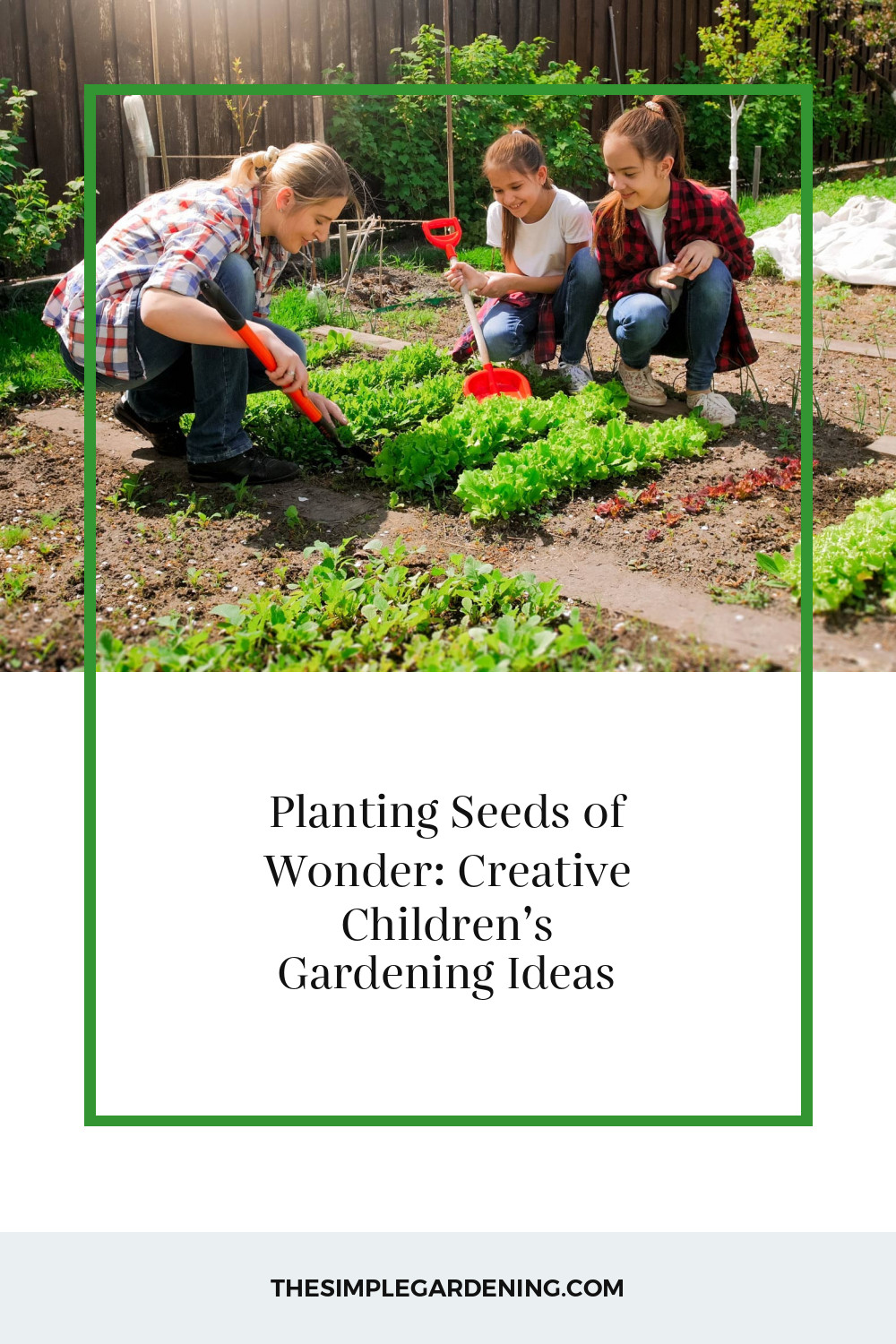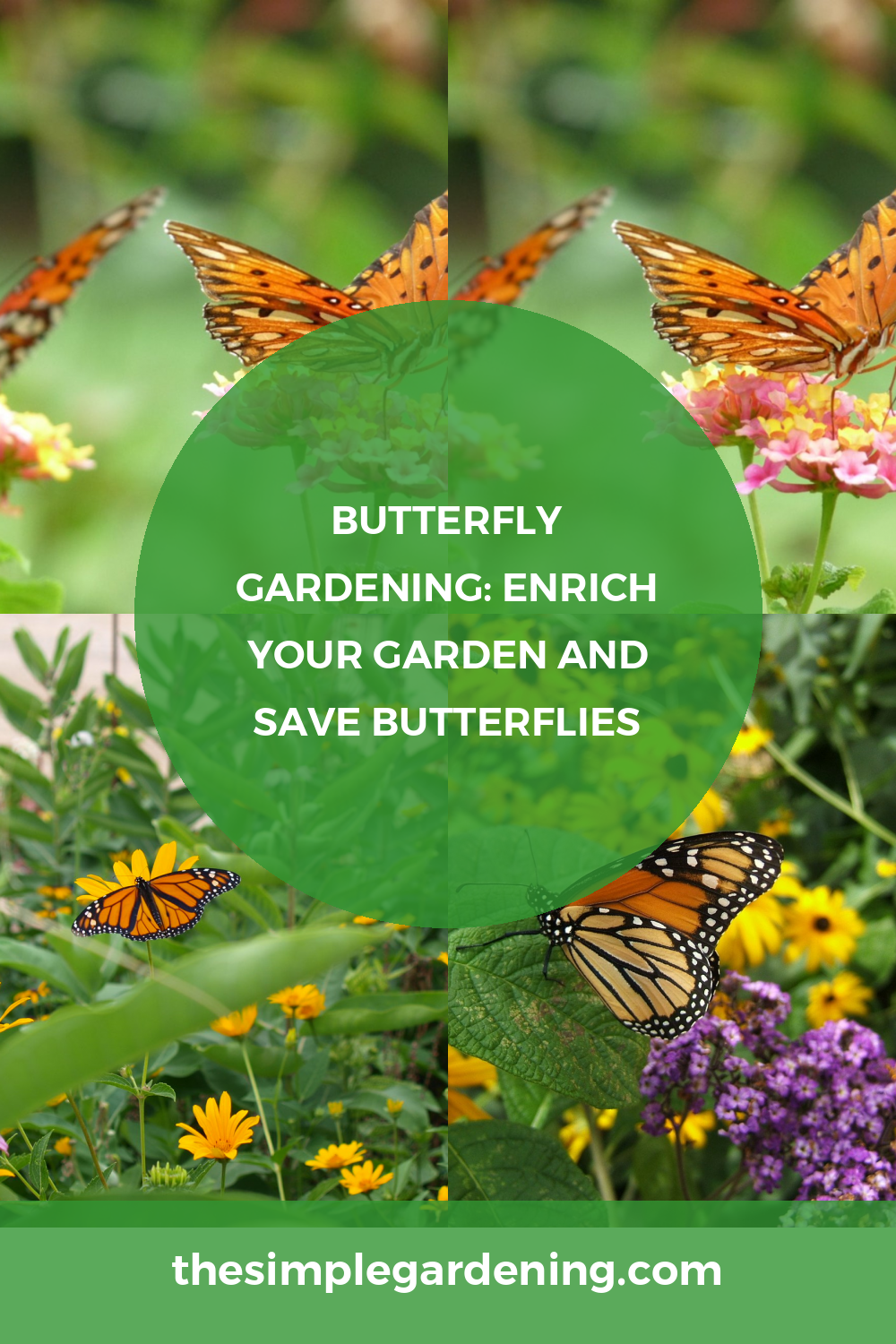Gardening with children is a delightful way to introduce them to the wonders of nature. It’s more than just planting seeds and watching them grow; it’s about fostering a deep connection with the environment, understanding the cycles of life, and cultivating a sense of responsibility and accomplishment. This article will guide you through the many facets of children’s gardening, providing tips, activities, and insights to make gardening an enriching experience for young ones.
Introduction: Cultivating a Love for Nature
Gardening offers children a hands-on way to explore nature. It teaches patience, responsibility, and the joy of nurturing life. But beyond these practical lessons, gardening also provides a sense of wonder and connection to the natural world.
The Importance of Gardening for Children’s Development
Gardening impacts children’s development in multiple ways. From cognitive growth to physical health, here’s a look at why gardening is beneficial for kids:
| Benefit | Description |
|---|---|
| Cognitive Development | Enhances problem-solving skills and creativity. |
| Physical Activity | Encourages exercise and coordination. |
| Emotional Well-being | Reduces stress and promotes relaxation. |
| Social Skills | Fosters teamwork and communication. |
| Environmental Awareness | Instills a sense of stewardship for nature. |
Gardening is a multi-faceted activity that engages both the mind and body, making it an ideal learning platform for children.
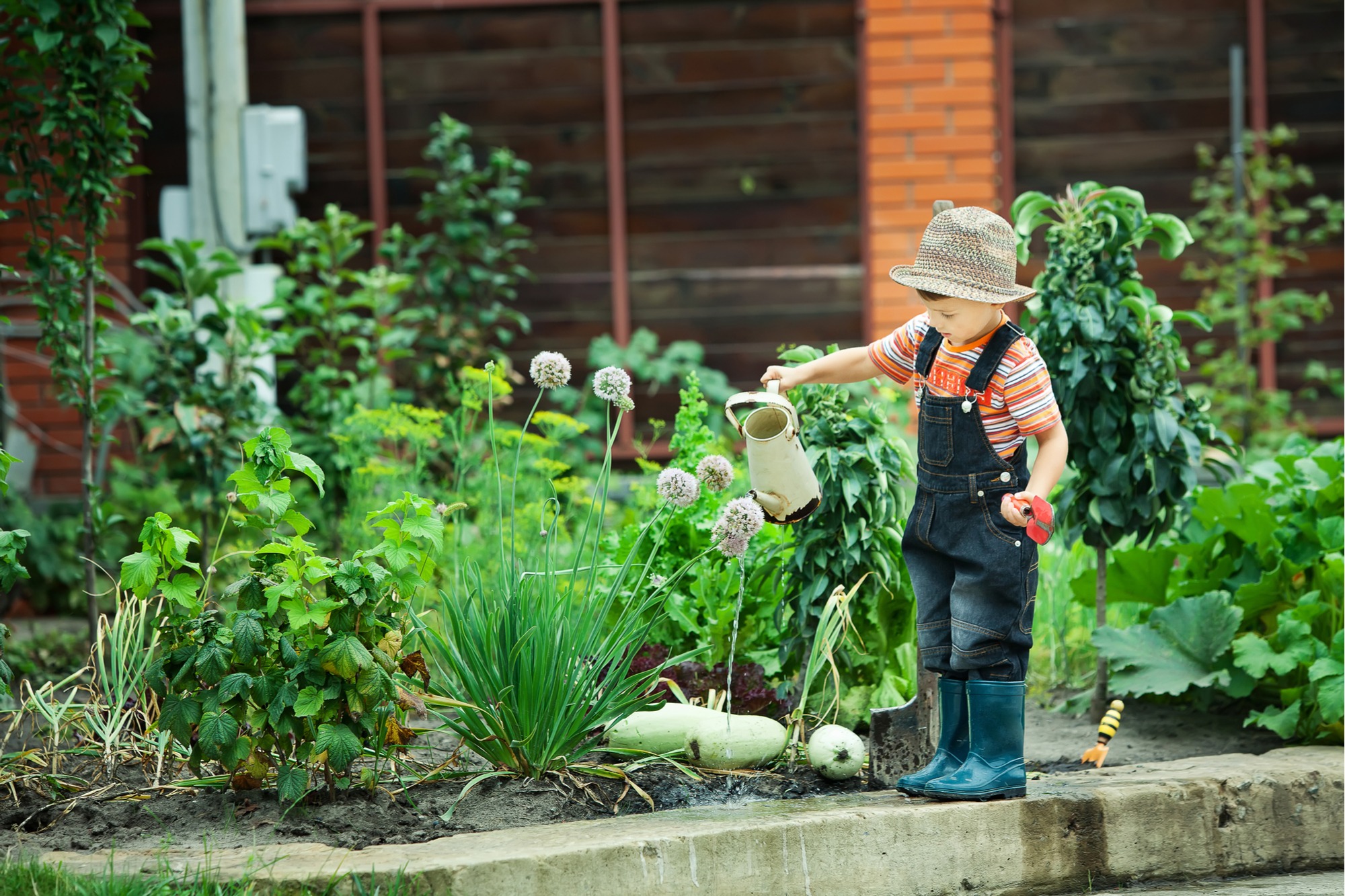
Source Image: www.installitdirect.com
Getting Started
Creating a child-friendly garden is the first step in fostering a love for gardening. This involves selecting the right tools, gear, and plants that are suitable for young gardeners.
Creating a Child-Friendly Garden Space
A garden designed with children in mind should be safe, engaging, and accessible. Consider these elements:
| Aspect | Tips for Implementation |
|---|---|
| Safety | Ensure no toxic plants, use child-safe tools, and have a soft ground cover. |
| Accessibility | Raised beds or container gardens for easy reach. |
| Engagement | Include colorful, fragrant, and sensory plants. |
| Size | Small, manageable plots to avoid overwhelming children. |
| Paths | Clear, wide paths for easy navigation. |
Tools and Gear for Young Gardeners
Having the right tools makes gardening both fun and safe for children. Here’s a list of essential gardening gear for kids:
- Kid-Sized Tools: Smaller, lightweight versions of adult tools.
- Gloves: Protects hands from dirt and sharp objects.
- Watering Can: Easy-to-handle watering tools.
- Apron: Keeps clothes clean and has pockets for tools.
- Sun Hat and Sunscreen: Protects from the sun’s rays.
| Tool | Purpose |
|---|---|
| Trowel | Digging small holes and transplanting. |
| Hand Fork | Breaking up soil and removing weeds. |
| Rake | Gathering leaves and debris. |
| Watering Can | Watering plants gently. |
| Gardening Gloves | Protecting hands while working. |
These tools are specifically designed to be safe and effective for young gardeners, making the gardening process enjoyable.

Source Image: www.kidsdogardening.com
Planting and Growing
Choosing the right plants and understanding the plant lifecycle are crucial steps in children’s gardening.
Choosing Plants for Children’s Gardens
Selecting plants that are easy to grow and maintain ensures that children stay engaged and motivated. Here are some great options:
| Plant | Benefits |
|---|---|
| Sunflowers | Fast-growing, visually striking, and easy to care for. |
| Radishes | Quick harvest time, great for teaching patience. |
| Cherry Tomatoes | Fun to pick and eat, easy to grow in containers. |
| Marigolds | Bright colors and pest-resistant. |
| Snapdragons | Colorful and interactive, as flowers “snap” when pinched. |
Understanding Plant Lifecycles: From Seed to Harvest
Teaching children about the plant lifecycle helps them understand the process of growth and change. Here’s a simplified lifecycle:
- Seed: Planting and germination.
- Sprout: First leaves appear.
- Seedling: Growth of stronger stems and leaves.
- Mature Plant: Full growth and flowering.
- Harvest: Collecting fruits or vegetables.
- Decay: Plants return nutrients to the soil.
| Stage | Description |
|---|---|
| Seed | Begins germination under the right conditions. |
| Sprout | Initial leaves break through the soil. |
| Seedling | Grows roots, stems, and true leaves. |
| Mature Plant | Fully developed, ready to flower or fruit. |
| Harvest | Time to collect the produce. |
| Decay | Nutrients return to the soil as the plant dies. |
Understanding these stages helps children appreciate the time and care needed to grow plants successfully.
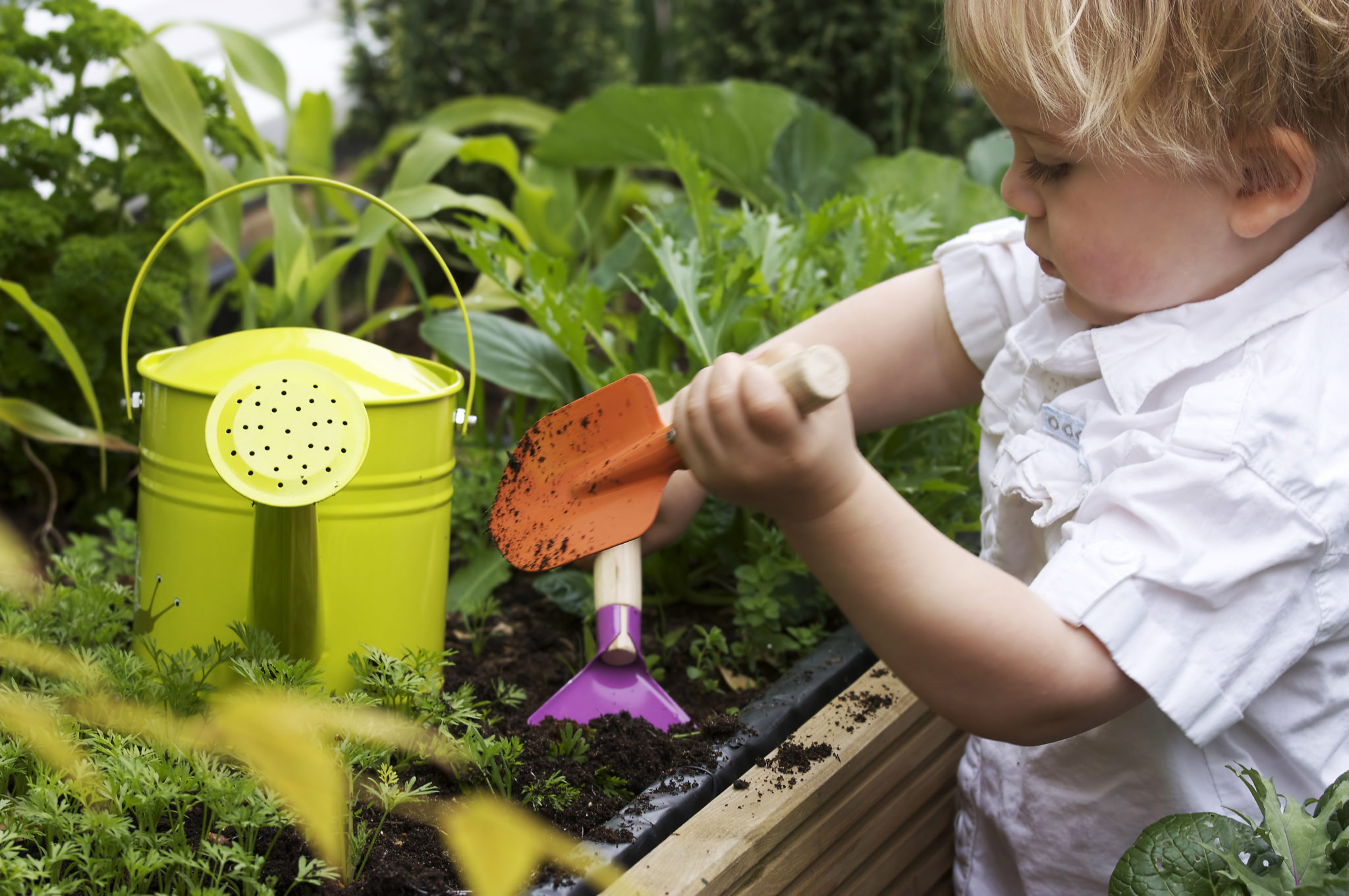
Source Image: ohparent.com
Children’s Gardening
Garden Activities
Keeping gardening fun and educational ensures that children stay interested. Here are some activities that engage their senses and curiosity.
Fun and Educational Garden Activities for Kids
Incorporate activities that combine fun with learning. Here are some ideas:
- Scavenger Hunts: Create lists of items for children to find in the garden.
- Plant Labeling: Have kids make and decorate labels for plants.
- Measuring Growth: Track plant growth over time with a chart.
- Garden Journals: Encourage children to draw and write about their garden experiences.
- Composting: Teach the importance of recycling organic waste.
| Activity | Purpose |
|---|---|
| Scavenger Hunts | Enhances observational skills. |
| Plant Labeling | Promotes creativity and plant identification. |
| Measuring Growth | Teaches measurement and tracking. |
| Garden Journals | Develops writing and drawing skills. |
| Composting | Introduces recycling and sustainability. |
Sensory Gardens: Engaging Children’s Senses in the Garden
Creating a sensory garden stimulates children’s senses and enhances their experience. Here are some elements to include:
| Sense | Examples |
|---|---|
| Sight | Bright flowers like marigolds and sunflowers. |
| Smell | Fragrant herbs like lavender and mint. |
| Touch | Soft plants like lamb’s ear and ferns. |
| Taste | Edible plants like strawberries and peas. |
| Sound | Wind chimes and rustling leaves. |
A sensory garden creates a rich, multi-sensory experience that keeps children engaged and curious.
Garden Crafts
Integrating crafts into gardening helps children express their creativity and make the garden more personal and fun.
DIY Garden Crafts for Children
Craft projects add a creative touch to gardening. Here are some DIY ideas:
- Painted Pots: Let children paint their own flower pots.
- Bird Feeders: Make feeders from recycled materials.
- Garden Stepping Stones: Create personalized stepping stones.
- Plant Markers: Design unique markers for garden plants.
- Fairy Gardens: Build miniature gardens with fairy accessories.
| Craft | Materials Needed |
|---|---|
| Painted Pots | Terracotta pots, acrylic paint, brushes. |
| Bird Feeders | Pine cones, peanut butter, bird seed. |
| Stepping Stones | Concrete mix, molds, decorative stones. |
| Plant Markers | Popsicle sticks, paint, markers. |
| Fairy Gardens | Small plants, fairy figurines, pebbles. |
Turning Garden Treasures into Art: Nature-inspired Crafts
Using natural materials found in the garden, children can create beautiful art projects:
| Project | Materials Needed |
|---|---|
| Leaf Prints | Leaves, paint, paper. |
| Flower Crowns | Flowers, floral wire, tape. |
| Nature Collages | Leaves, flowers, sticks, glue, paper. |
| Pressed Flowers | Flowers, heavy books, paper. |
| Seed Mosaics | Various seeds, glue, canvas or cardboard. |
These crafts not only foster creativity but also deepen children’s appreciation for nature’s beauty.
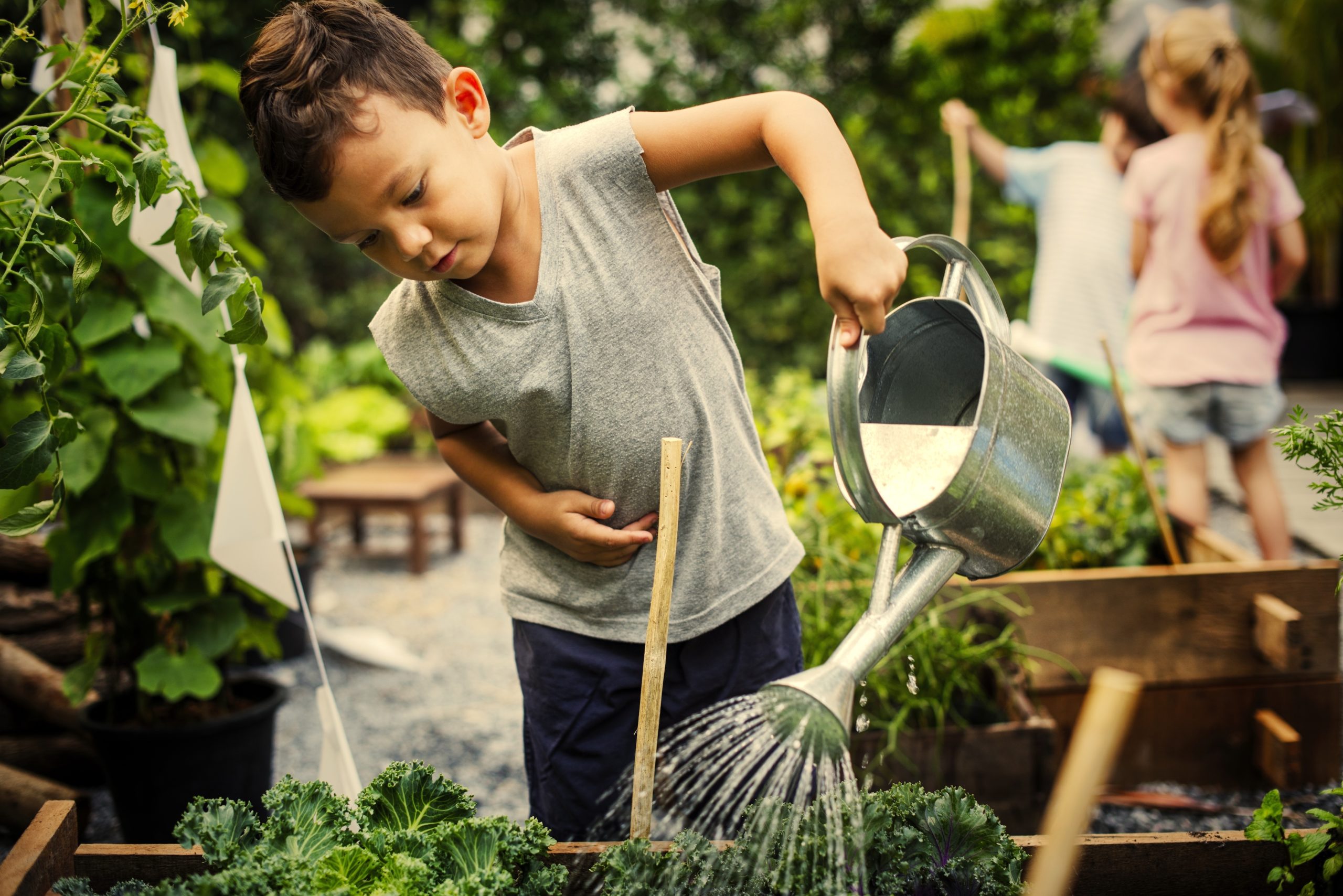
Source Image: indyschild.com
Wildlife and Nature
Encouraging wildlife in the garden teaches children about ecosystems and the importance of biodiversity.
Encouraging Wildlife in Children’s Gardens
Creating habitats for wildlife can be simple and rewarding. Here are some ways to attract wildlife:
- Birdhouses: Install birdhouses to attract nesting birds.
- Bee Hotels: Provide shelter for solitary bees.
- Butterfly Gardens: Plant nectar-rich flowers for butterflies.
- Ponds: Small ponds attract frogs and dragonflies.
- Log Piles: Piles of logs can be homes for insects and small animals.
| Wildlife Attraction | Method |
|---|---|
| Birdhouses | Provides nesting sites for birds. |
| Bee Hotels | Offers nesting sites for solitary bees. |
| Butterfly Gardens | Attracts butterflies with nectar plants. |
| Ponds | Creates a habitat for amphibians. |
| Log Piles | Provides shelter for insects and small animals. |
Exploring Nature in the Garden: Insects, Birds, and More
Encourage children to observe and learn about the various creatures that visit their garden:
| Creature | Interesting Facts |
|---|---|
| Butterflies | Pollinate flowers and come in various species. |
| Bees | Essential pollinators with fascinating behaviors. |
| Ladybugs | Help control garden pests like aphids. |
| Birds | Various species visit gardens, each with unique songs. |
| Worms | Improve soil health by aerating it and breaking down organic matter. |
Observing these creatures fosters a sense of wonder and respect for wildlife.

Source Image: www.huffingtonpost.co.uk
Seasonal Gardening
Gardening can be a year-round activity with different tasks and projects for each season.
Gardening with Children Throughout the Seasons
Each season brings unique gardening opportunities. Here’s what to focus on:
| Season | Activities |
|---|---|
| Spring | Planting seeds, preparing beds, observing new growth. |
| Summer | Watering, weeding, harvesting. |
| Autumn | Planting bulbs, collecting seeds, mulching. |
| Winter | Planning for next year, indoor gardening, crafts. |
Winter Wonderland: Garden Activities for Cold Weather
Even in winter, there are plenty of garden-related activities to enjoy:
- Indoor Planting: Grow herbs or small plants indoors.
- Planning: Design next season’s garden.
- Crafts: Create garden-related crafts like bird feeders.
- Story Time: Read books about gardening and nature.
- Snow Gardens: Build structures or sculptures in the snow.
| Winter Activity | Description |
|---|---|
| Indoor Planting | Grow herbs and small plants inside. |
| Planning | Design and plan the garden for the next season. |
| Crafts | Make garden-related crafts. |
| Story Time | Read gardening and nature books. |
| Snow Gardens | Create structures or sculptures with snow. |
Winter activities ensure children stay connected to gardening even in colder months.
Harvesting and Cooking
Harvesting and cooking with garden produce teaches children about healthy eating and the joy of eating what they’ve grown.
Harvesting and Cooking from the Children’s Garden
Involve children in harvesting and cooking to show them the full cycle of food production:
| Step | Description |
|---|---|
| Harvesting | Teach how to properly pick fruits and vegetables. |
| Cleaning | Wash and prepare the produce for cooking. |
| Cooking | Simple recipes that children can help with. |
| Eating | Enjoy the meals together as a family. |
| Composting | Compost kitchen scraps to return nutrients to the soil. |
Teaching Healthy Eating Habits through Garden-to-Table Cooking
Cooking with garden produce encourages healthy eating habits. Here are some easy recipes:
- Garden Salad: Fresh greens, cherry tomatoes, cucumbers, and herbs.
- Veggie Sticks: Carrots, celery, and bell peppers with a dip.
- Herb Butter: Mix fresh herbs with butter for a tasty spread.
- Fruit Smoothies: Blend garden fruits with yogurt and honey.
- Herb Tea: Brew mint or chamomile leaves for a soothing drink.
| Recipe | Ingredients |
|---|---|
| Garden Salad | Greens, cherry tomatoes, cucumbers, herbs. |
| Veggie Sticks | Carrots, celery, bell peppers, dip. |
| Herb Butter | Fresh herbs, butter. |
| Fruit Smoothies | Garden fruits, yogurt, honey. |
| Herb Tea | Mint or chamomile leaves. |
These activities connect children to their food sources and promote healthy lifestyle choices.
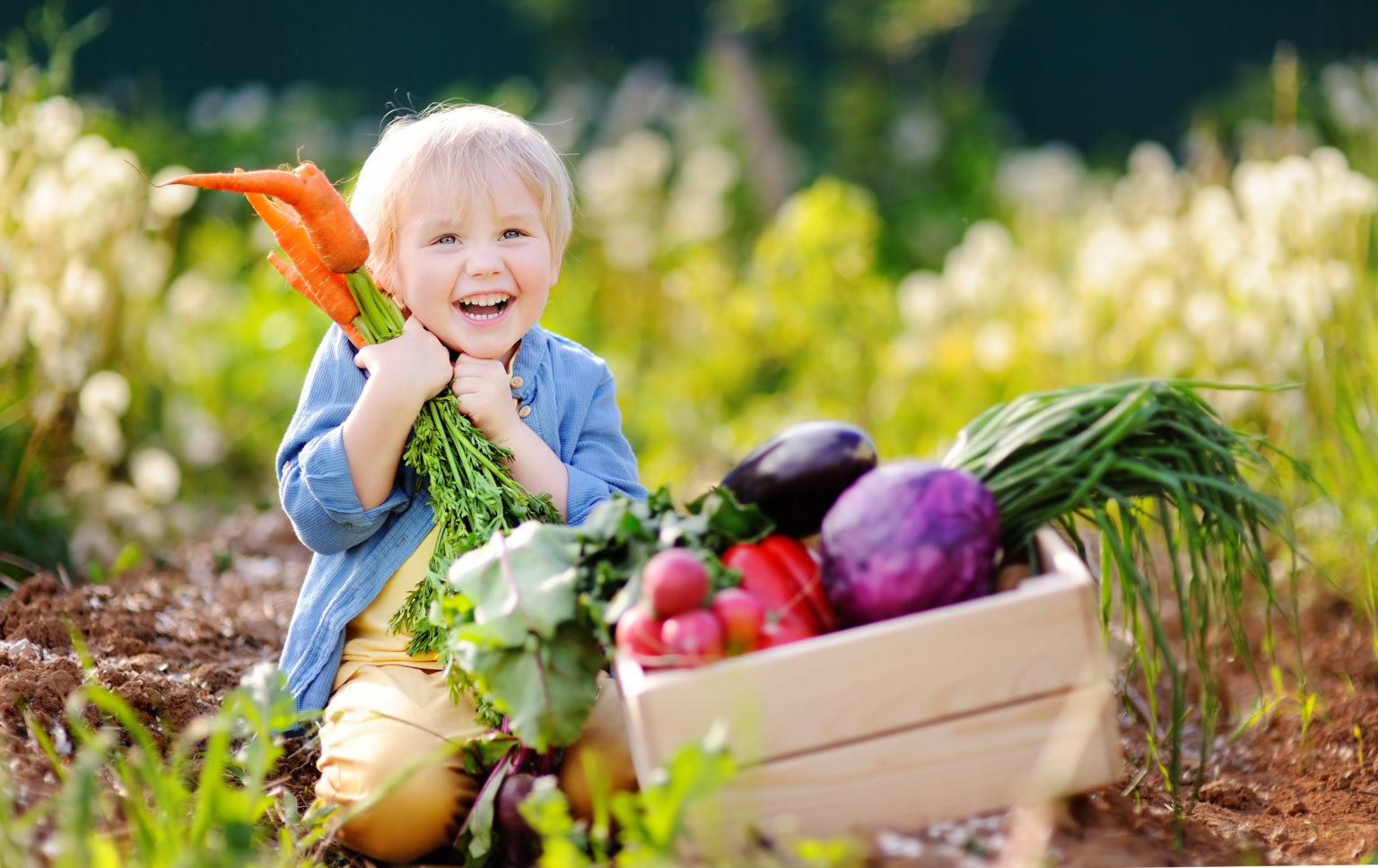
Source Image: blog.jungseed.com
Children’s Gardening
Education and Learning
Gardening is a powerful educational tool that integrates various subjects and skills.
Using the Garden as a Classroom: Educational Opportunities
The garden offers countless learning opportunities across subjects:
| Subject | Activities |
|---|---|
| Science | Study plant lifecycles, insects, and ecosystems. |
| Math | Measure growth, count seeds, plan garden layouts. |
| Art | Draw plants, create garden crafts. |
| Literature | Read and write about gardening experiences. |
| Social Studies | Learn about the history of gardening and agriculture. |
STEM in the Garden: Science, Technology, Engineering, and Math Activities
Incorporating STEM activities in the garden enhances learning:
- Botany Experiments: Study plant growth under different conditions.
- Weather Station: Track weather and its effects on the garden.
- Engineering Projects: Build garden structures like trellises or irrigation systems.
- Math Applications: Calculate planting distances and harvest yields.
- Technology Integration: Use apps to identify plants and track garden progress.
| STEM Activity | Description |
|---|---|
| Botany Experiments | Study plant growth variations. |
| Weather Station | Monitor and record weather data. |
| Engineering Projects | Build garden structures. |
| Math Applications | Calculate and measure garden-related data. |
| Technology Integration | Use apps for plant identification and tracking. |
STEM activities in the garden make learning interactive and practical.
Community and Social Connection
Gardening fosters a sense of community and collaboration among children and adults.
Building Community through Children’s Gardening Projects
Gardening projects can bring communities together. Here’s how to get started:
| Project | Benefits |
|---|---|
| Community Garden | Shared space for families to garden together. |
| Garden Swaps | Exchange plants and seeds with neighbors. |
| Workshops | Host gardening workshops for children and adults. |
| Garden Tours | Organize tours to showcase children’s gardens. |
| Volunteer Projects | Participate in community beautification efforts. |
School Gardens: Fostering Collaboration and Responsibility
School gardens offer unique educational and social benefits:
| Benefit | Description |
|---|---|
| Teamwork | Encourages collaboration among students. |
| Responsibility | Teaches care and maintenance of the garden. |
| Curriculum Integration | Enhances various subjects through practical learning. |
| Community Involvement | Engages the wider community in school activities. |
| Healthy Habits | Promotes physical activity and healthy eating. |
School gardens serve as living classrooms and foster a sense of responsibility and pride among students.
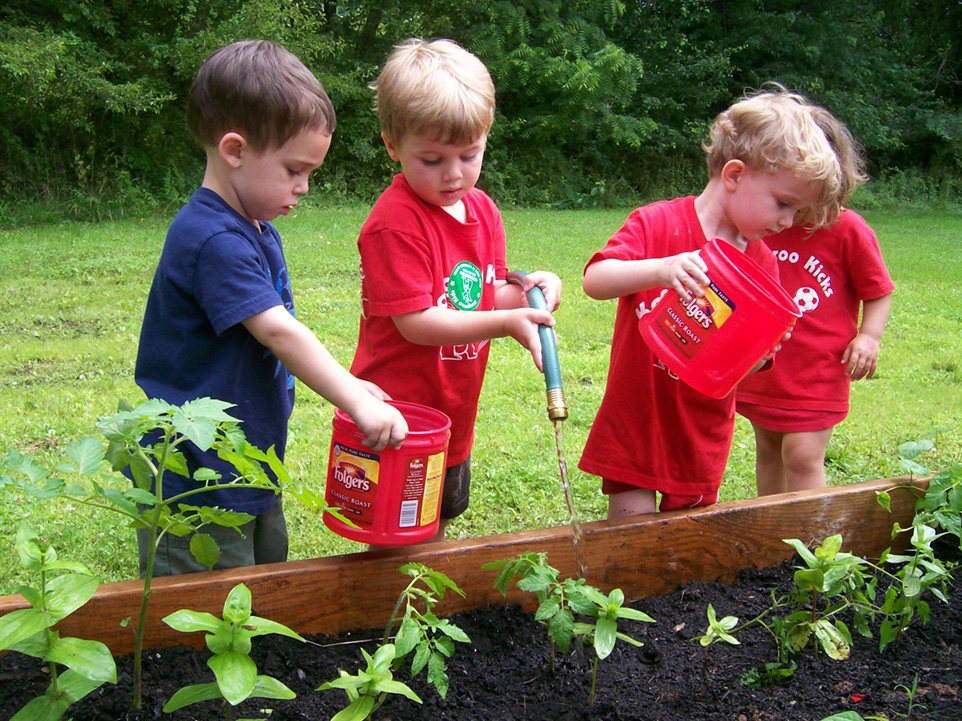
Source Image: www.kangarookidschildcare.com
Environmental Awareness
Gardening teaches children the importance of sustainability and environmental stewardship.
Teaching Sustainability through Children’s Gardening
Gardening is a practical way to teach sustainability. Here are key concepts to introduce:
- Composting: Turn organic waste into nutrient-rich soil.
- Water Conservation: Use rain barrels and drip irrigation.
- Recycling: Reuse materials for garden projects.
- Organic Gardening: Avoid chemicals and promote natural pest control.
- Biodiversity: Plant a variety of species to support ecosystems.
| Sustainability Practice | Description |
|---|---|
| Composting | Converts waste into valuable compost. |
| Water Conservation | Saves water through efficient methods. |
| Recycling | Reuses materials creatively. |
| Organic Gardening | Promotes a chemical-free garden environment. |
| Biodiversity | Supports a healthy ecosystem. |
Instilling Environmental Stewardship in Young Gardeners
Encouraging children to care for the environment helps develop lifelong habits:
| Practice | Method |
|---|---|
| Lead by Example | Model sustainable practices in your gardening. |
| Educational Activities | Teach through hands-on garden projects. |
| Storytelling | Share stories about the importance of nature. |
| Outdoor Adventures | Explore natural areas to reinforce garden lessons. |
| Community Service | Participate in environmental cleanup projects. |
These practices help children understand their role in protecting the environment.
Health and Well-being
Gardening promotes physical, mental, and emotional well-being for children.
The Therapeutic Benefits of Children’s Gardening
Gardening provides numerous therapeutic benefits:
| Benefit | Description |
|---|---|
| Physical Health | Encourages outdoor activity and exercise. |
| Mental Health | Reduces stress and anxiety. |
| Emotional Well-being | Boosts self-esteem and a sense of accomplishment. |
| Social Interaction | Fosters relationships and teamwork. |
| Cognitive Development | Enhances focus and learning through hands-on activities. |
Connecting with Nature: Promoting Mental and Physical Health
Connecting with nature through gardening improves overall health:
| Health Aspect | Benefit |
|---|---|
| Physical Activity | Increases fitness through gardening tasks. |
| Vitamin D | Sun exposure boosts vitamin D levels. |
Mental Health
Gardening has a profound impact on mental well-being:
| Aspect | Effect |
|---|---|
| Stress Relief | Spending time in nature reduces cortisol levels. |
| Mood Enhancement | Gardening triggers the release of endorphins. |
| Mindfulness | Focus on gardening tasks promotes mindfulness. |
| Therapeutic Effects | Cultivates a sense of calm and relaxation. |
| Emotional Expression | Gardening allows children to express emotions through nurturing plants. |
Engaging in gardening activities helps children develop resilience and coping skills.
Celebrating Success
Recognizing and celebrating children’s gardening achievements reinforces their love for nature and gardening.
Recognizing Children’s Gardening Achievements
Acknowledging children’s efforts boosts their confidence and motivation:
| Achievement | Recognition Ideas |
|---|---|
| Harvesting Produce | Host a garden-to-table feast with family and friends. |
| Successful Seedlings | Award certificates for successful seed germination. |
| Creative Projects | Display garden crafts at community events. |
| Community Impact | Recognize contributions to local environment through awards. |
| Personal Growth | Celebrate improvements in gardening skills and knowledge. |
Garden Parties and Celebrations: Sharing the Joy of Gardening
Garden parties offer an opportunity to share the joy of gardening with others:
- Harvest Festivals: Celebrate the bounty of the garden with food and music.
- Garden Tours: Invite neighbors and friends to tour the garden.
- Workshops: Host gardening workshops for children and families.
- Theme Parties: Plan themed parties based on garden elements like butterflies or bees.
- Competitions: Organize friendly competitions like “best garden design” or “biggest sunflower.”
| Celebration | Description |
|---|---|
| Harvest Festivals | Share garden produce and recipes with others. |
| Garden Tours | Showcase the garden’s beauty and achievements. |
| Workshops | Learn new skills and techniques together. |
| Theme Parties | Incorporate garden themes into party decorations. |
| Competitions | Foster friendly competition and camaraderie. |
Celebrating gardening milestones creates a sense of community and pride among participants.
Reflecting on the impact of children’s gardening reveals its profound influence on their development and well-being. By nurturing future gardeners, we ensure a greener, healthier planet for generations to come.
Nurturing Future Gardeners: Cultivating a Sustainable Legacy
In this comprehensive guide to children’s gardening, we explored the myriad benefits and opportunities that gardening offers young minds. From fostering a love for nature to promoting physical and mental well-being, gardening serves as a powerful educational tool and a source of joy and connection. By embracing children’s gardening projects and initiatives, we lay the groundwork for a more sustainable and environmentally conscious future. Join us in sowing the seeds of curiosity, creativity, and stewardship in the hearts of our youngest gardeners.
In conclusion, children’s gardening is not just about planting seeds; it’s about nurturing growth, fostering connections, and cultivating a brighter tomorrow—one garden at a time.

